1. Floor-Mounted Dimmer Switches
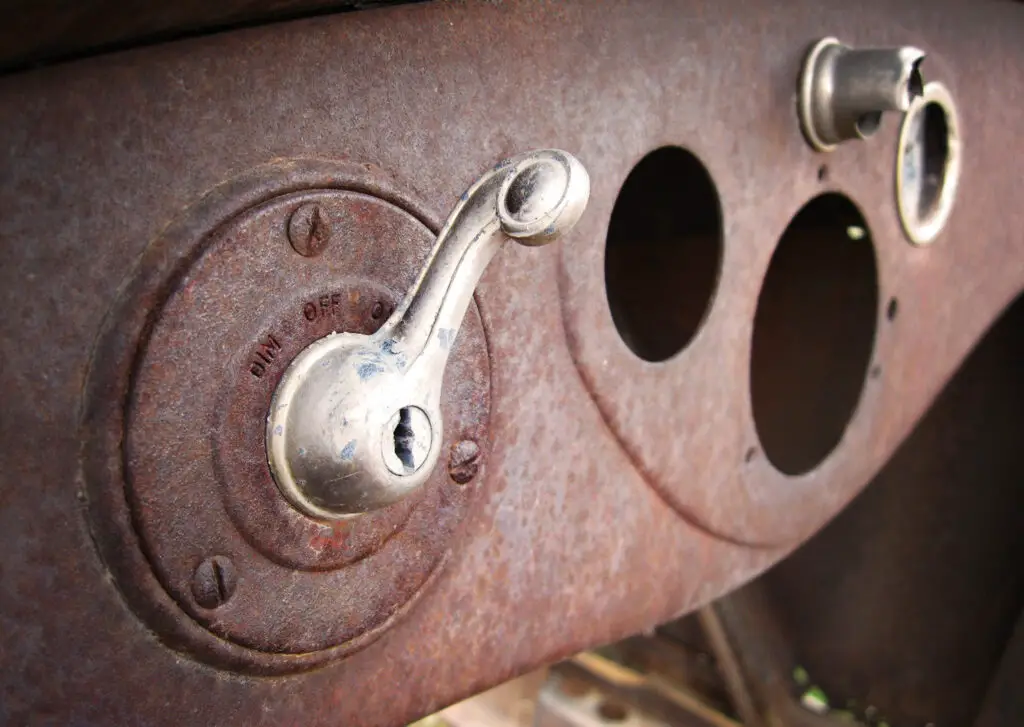
Back in the day, switching between high and low beams wasn’t something you did with a simple flick of a stalk on the steering column. Instead, drivers had to tap a little button on the floor near the pedals, often with their left foot. This meant that if you weren’t careful, you could accidentally hit the wrong pedal while trying to brighten or dim your headlights. For younger drivers used to fingertip controls, the idea of adjusting headlights with their foot would seem downright bizarre. It was actually a smart placement in a way, keeping the driver’s hands free, but it also meant fumbling around in the dark with your foot to make sure you found the right button. If you had a heavy boot or high heels on, it could be even trickier to get the right amount of pressure. Plus, if the switch got stuck, you were stuck with either blinding high beams or barely any visibility says Hagerty.
The real kicker was that these dimmer switches could get jammed with dirt, salt, or debris, making them unreliable in bad weather. Imagine driving in a rainstorm, desperately trying to dim your lights for oncoming traffic, only to realize the switch wasn’t working. Modern drivers would probably be baffled by the need to stomp on the floor just to control their headlights. Today, everything is sleek, automatic, and controlled with a simple twist or push on the steering column. But back then, it was all about manual effort, and you just had to deal with the quirks. Some people actually preferred it, saying it felt more intuitive once you got used to it. Of course, most cars phased this out by the ’80s, opting for the now-standard stalk controls. But for those who drove in the ’50s and ’60s, tapping the floor to adjust the beams was just part of the experience.
2. Manual Choke Knobs
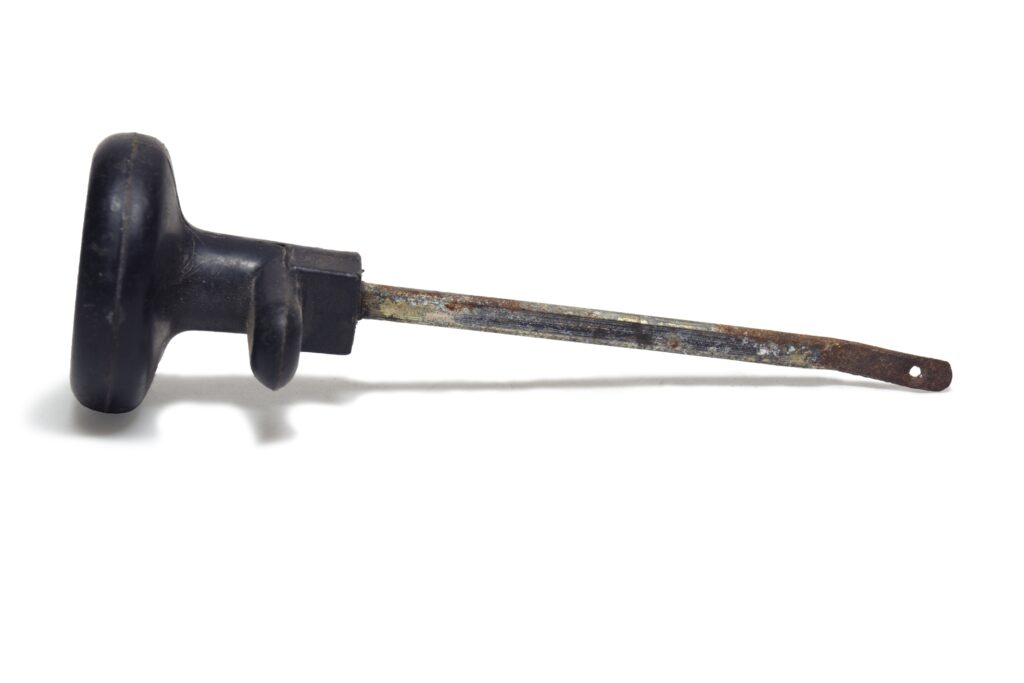
Before fuel injection became standard, cars had carburetors that required a little extra help to get going, especially in cold weather. Enter the manual choke knob, a feature that let drivers control the air-fuel mixture to help start the engine. If you didn’t pull it out just right, your car might sputter, stall, or refuse to start entirely. Too much choke and you’d flood the engine; too little and it wouldn’t turn over at all. It was a delicate balance that required some trial and error, and it certainly wasn’t as easy as just turning a key or pushing a button like today. Younger drivers today would have no clue why there was an extra knob near the dashboard, let alone how to use it explains Snopes.
And heaven help you if you forgot to push the choke back in after starting the car—your engine would run rough, waste gas, and sometimes even backfire. Many drivers had to learn by experience, and sometimes that meant learning the hard way. This was just part of the morning ritual for older drivers, especially in colder climates where starting a car was a whole process. These days, cars automatically adjust the fuel mixture for smooth starting in any weather, making the choke knob completely obsolete. But for boomers, it was just another small skill every driver had to master. It also meant that getting behind the wheel of a new car sometimes required adjusting to slightly different choke mechanisms, which varied between models. If you ever hear an older driver reminiscing about “knowing how to work the choke,” now you know what they’re talking about.
3. Hand-Crank Windows
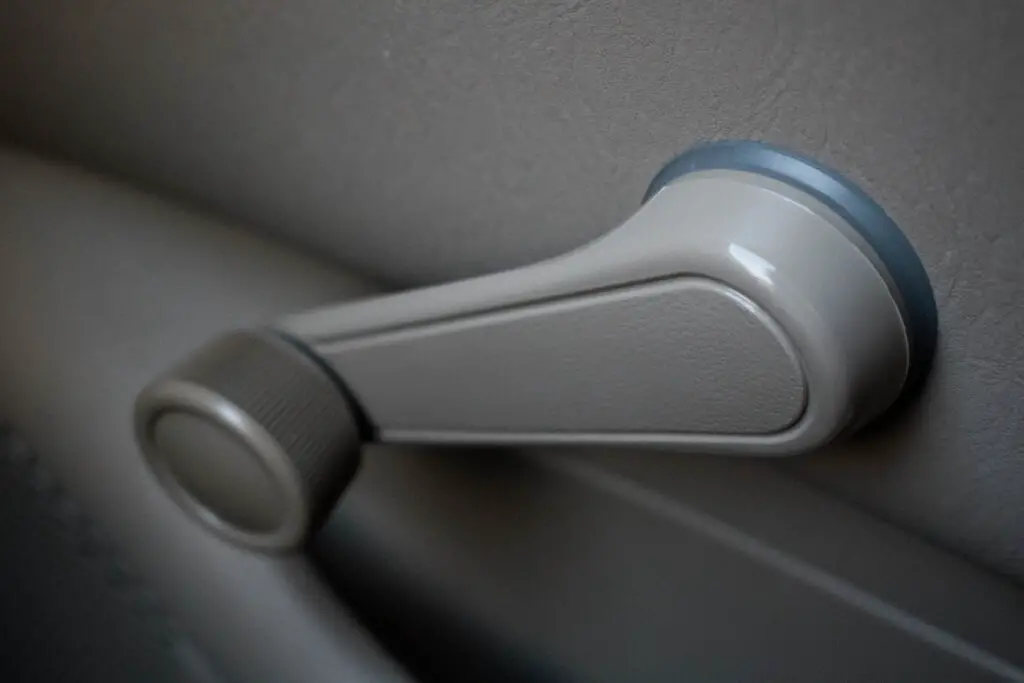
Rolling down the window used to be a literal workout, requiring drivers and passengers to turn a crank handle to lower or raise the glass. If you wanted some fresh air while driving, you had to manually spin the handle multiple times to get the window down. And if you needed to roll down all the windows? Well, that was an arm workout nobody asked for. If a storm rolled in and you had to close them quickly, you’d be cranking like crazy just to avoid getting drenched. Kids today, who are used to one-touch automatic windows, would probably be confused as to why they had to manually turn something just to get a little breeze.
And don’t even get started on the struggle of adjusting the passenger side window while driving. Either you had to reach across the car awkwardly, or you had to ask your passenger to do it for you. Power windows have completely eliminated this problem, but back in the day, it was just how things worked. Some people actually preferred it because there were no motors to fail, meaning the windows would never get stuck in one position. But for anyone who’s ever had to roll down a window in a hurry, electric buttons are a definite improvement. If you ever get into a vintage car and see those little cranks on the door, now you know why they’re there says Cars.com.
4. Ashtrays and Lighter Plugs in Every Car
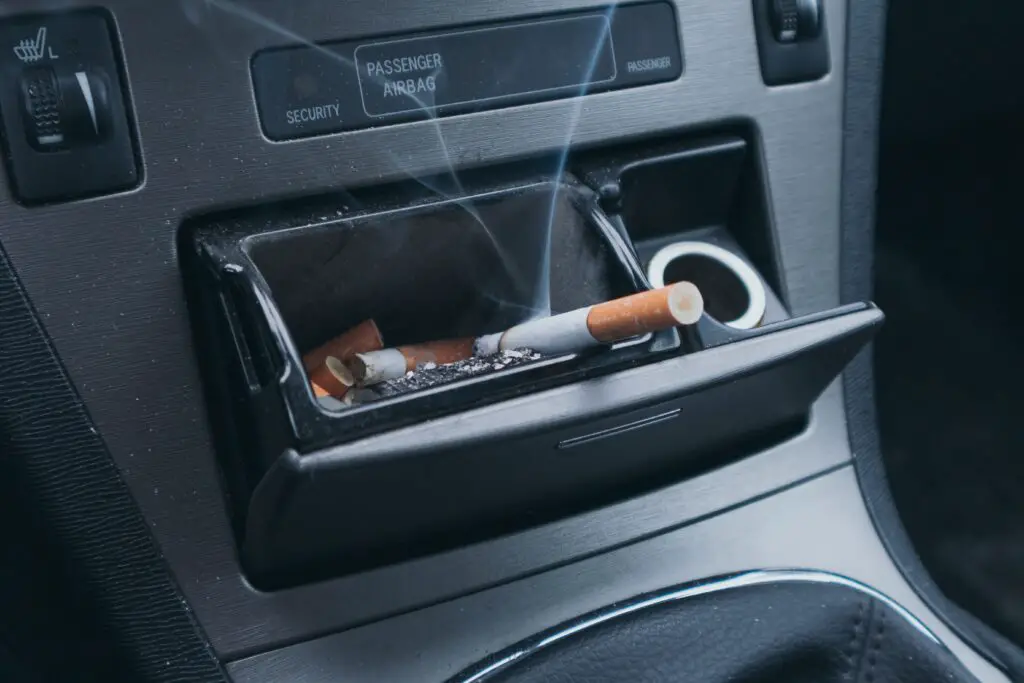
Once upon a time, smoking in cars was so common that manufacturers built in dedicated ashtrays and lighter plugs as standard features. Every car had at least one ashtray, often more, and they were usually built right into the dashboard or doors. The push-in lighter plug would heat up a coil, which could then be used to light a cigarette explains Quartz. These were everywhere, and most passengers didn’t think twice about using them. Younger drivers today might see one of these old-school lighters and wonder why there was a random hot coil in the dashboard.
But smoking habits changed, and eventually, automakers started phasing these out in favor of simple 12V power outlets. Nowadays, those old lighter sockets are more commonly used for phone chargers and dash cams than anything else. The idea of built-in ashtrays is practically unheard of in newer cars, and most younger drivers wouldn’t even know what they were for. Some classic car restorations even remove them entirely because they’re just not needed anymore. It’s a sign of how much habits and priorities have changed over the decades. If you ever see a vintage car with a tiny pull-out tray near the dash, now you know it wasn’t for holding coins.
5. Bench Seats in the Front
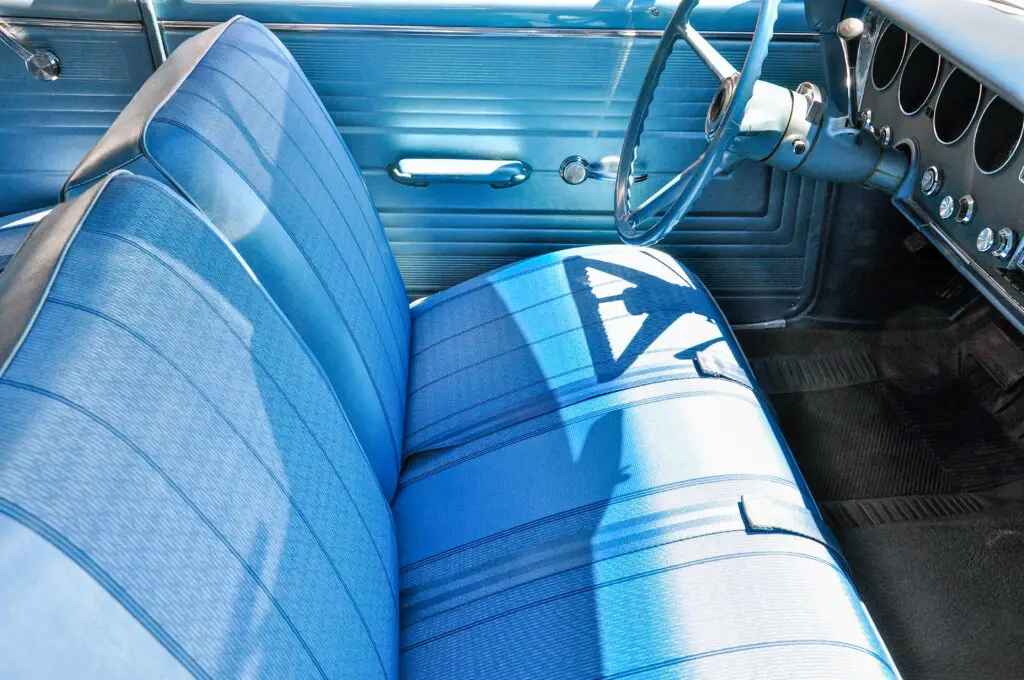
Back in the day, many cars had a single, continuous bench seat in the front instead of the bucket seats we see today. This meant that up to three people could sit up front, with no center console or armrests getting in the way. It was especially convenient for couples—who needed a pesky gear shift in the way when you could slide right next to your date? Younger drivers today, used to their own designated seats with cup holders and storage, would probably be baffled by the idea of squeezing in shoulder-to-shoulder with two other people. Seat belts weren’t always required back then either, so sometimes, people just sat wherever they could fit.
Of course, safety concerns eventually led to the decline of front bench seats, and by the ’90s, they had all but disappeared. It’s hard to imagine now, but driving used to feel more like sitting on a couch, with no bolstered seats or center consoles dividing up space. Some older drivers still swear by them, saying they were more comfortable and allowed for more flexibility in seating arrangements. But for anyone used to today’s ergonomic, individually contoured seats, a flat bench might seem downright weird. Plus, with modern touchscreens, gear selectors, and storage compartments, the idea of having nothing but open space between the driver and passenger seems impractical. Unless you’re driving a classic car or an old-school pickup truck, you probably won’t see one of these again.
6. Push-Button Transmissions
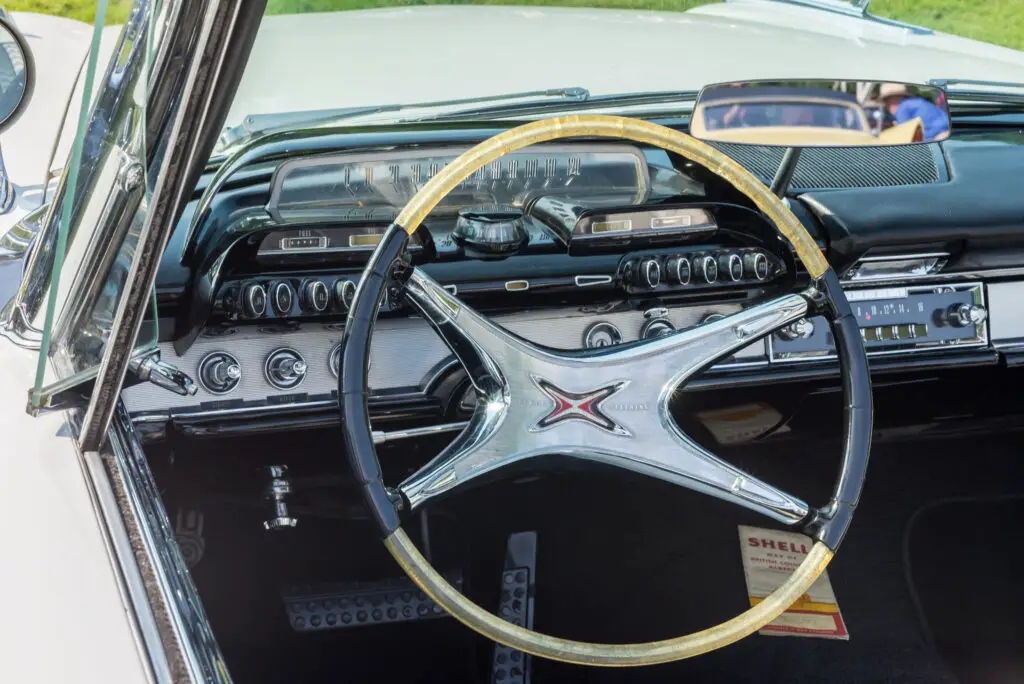
In the late ’50s and early ’60s, some cars experimented with replacing traditional gear shifters with push-button transmissions. Instead of a shift lever, drivers would press a button on the dashboard to select drive, reverse, or neutral. It sounds futuristic, but in reality, these systems often confused drivers who were used to physically moving a lever to change gears. The buttons were sometimes placed in odd spots, and if you accidentally pressed the wrong one while driving, things could get dicey fast. Today’s cars have brought back push-button start, but push-button shifting? Not so much.
One big issue was that these buttons could wear out or stick over time, making shifting unpredictable. Plus, without a physical lever, there was no immediate feedback to confirm that the car was in the right gear. While a few high-end luxury brands have played around with modern push-button gear selectors, they’re not common, and most drivers today wouldn’t know what to do with them. The system might have looked sleek, but most drivers preferred the tactile feel of a traditional shifter. It’s another example of an experiment that didn’t quite stand the test of time.
7. Wing Windows
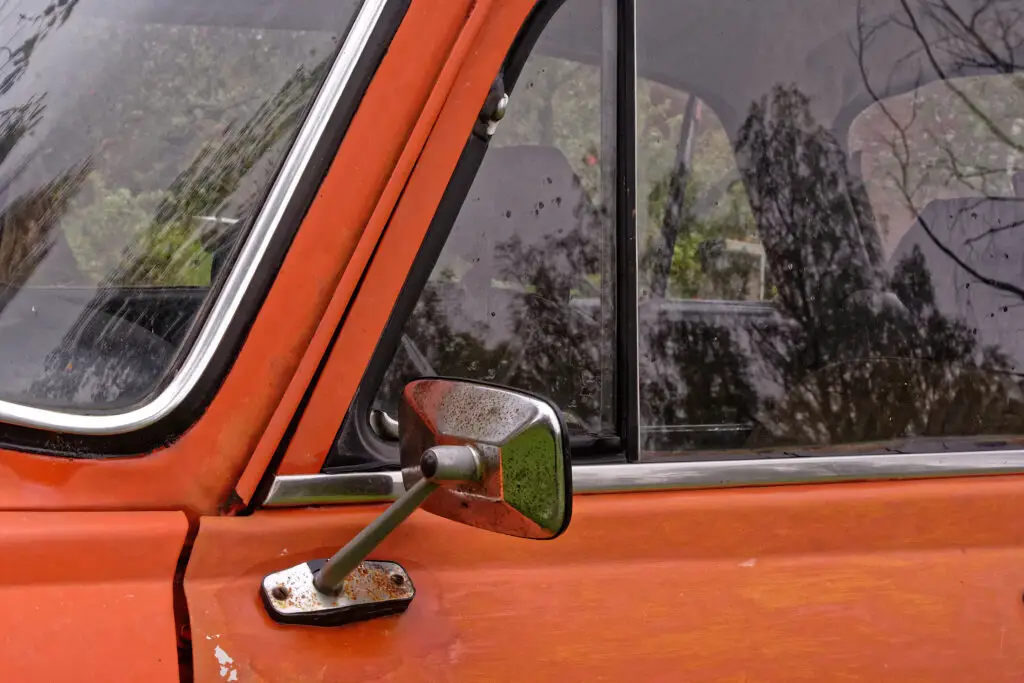
Before air conditioning was standard, cars relied on small, triangular vent windows—often called wing windows—to bring in fresh air. These little glass panels could be angled to direct airflow right into the car, providing a nice breeze without having to roll down the main window completely. If you were driving on a hot day, these were lifesavers, helping to keep the car cool without needing power-hungry A/C. For younger drivers, who are used to automatic climate control, the idea of manually adjusting tiny windows for better ventilation probably seems bizarre.
These days, wing windows are almost nonexistent, and most people wouldn’t even recognize them if they saw them on an older car. They were great for airflow, but they also made cars easier to break into since they were often less secure than regular windows. As A/C became more common, automakers ditched them, making cars sleeker and more aerodynamic. Some classic car fans still love them for their charm and practicality, but for the most part, they’re a relic of a time before climate control did all the work for you. If you ever see a vintage car with tiny hinged windows up front, now you know what they were for.
8. No Power Steering
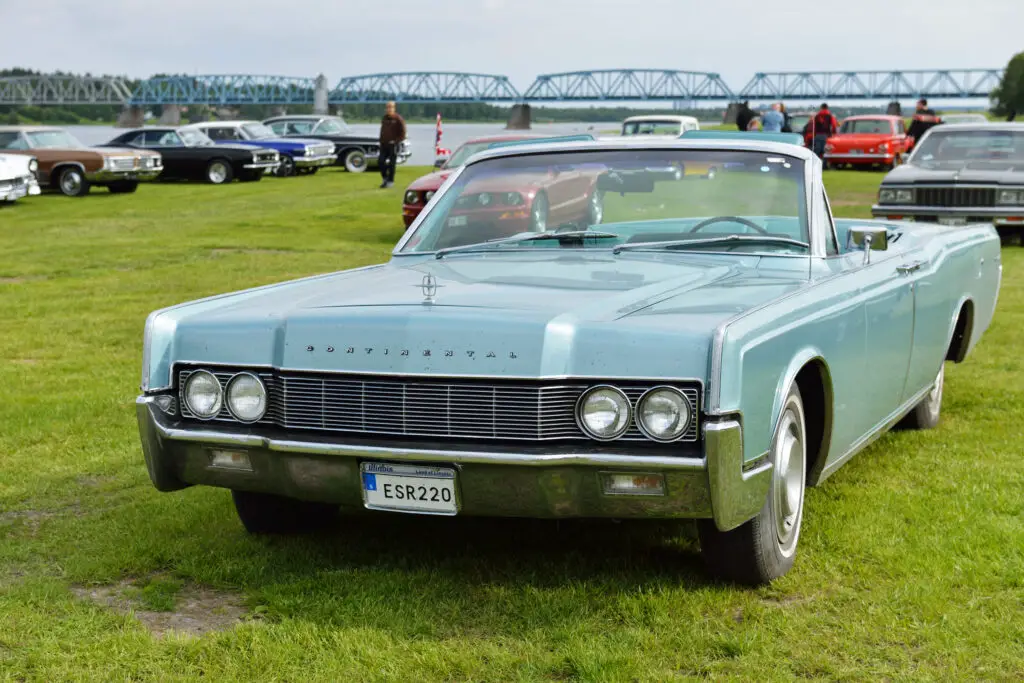
Driving without power steering was an absolute workout, requiring serious arm strength to maneuver the car at low speeds. Before hydraulic assist became the norm, turning the wheel was a full-body effort, especially in bigger cars with wide tires. Parking lots and tight turns were particularly brutal, often requiring drivers to crank the wheel multiple times just to get the car where they wanted. Younger drivers today, who are used to feather-light steering that responds effortlessly to the slightest touch, would probably be in for a rude awakening if they had to drive an old-school manual-steering car.
It wasn’t just a minor inconvenience—it completely changed the way you handled a car. Low-speed maneuvers felt like a gym session, and if the car was at a complete stop, good luck turning the wheel without some serious muscle. Highway driving was a little easier since momentum helped with steering, but city driving could be exhausting. Eventually, power steering became standard, and now most people don’t even think about it. But for older drivers who grew up without it, they’ll tell you that driving used to be a whole different experience.
9. Floor-Mounted Gas Pedals

Most modern cars have gas pedals that are suspended from above, but older vehicles often had floor-mounted gas pedals that pivoted from the bottom. This meant that instead of pushing the pedal forward, you pressed it down toward the floor. It might sound like a small difference, but it completely changed the feel of driving. Younger drivers today, used to the familiar hanging pedal design, might find the floor-mounted style awkward and unintuitive. It required a slightly different foot motion, and for some, it actually felt more natural.
These pedals were common in classic cars and muscle cars, where they were often designed for maximum throttle control. However, they weren’t as common in everyday sedans, and over time, most manufacturers switched to the hanging pedal design. Some high-performance cars still use them, but for the average driver, they’d feel pretty strange. It’s another example of how driving mechanics have subtly evolved over the years. If you ever step into a classic car and the gas pedal feels a little “off,” this might be why.
10. Seatbelt-Free Cars
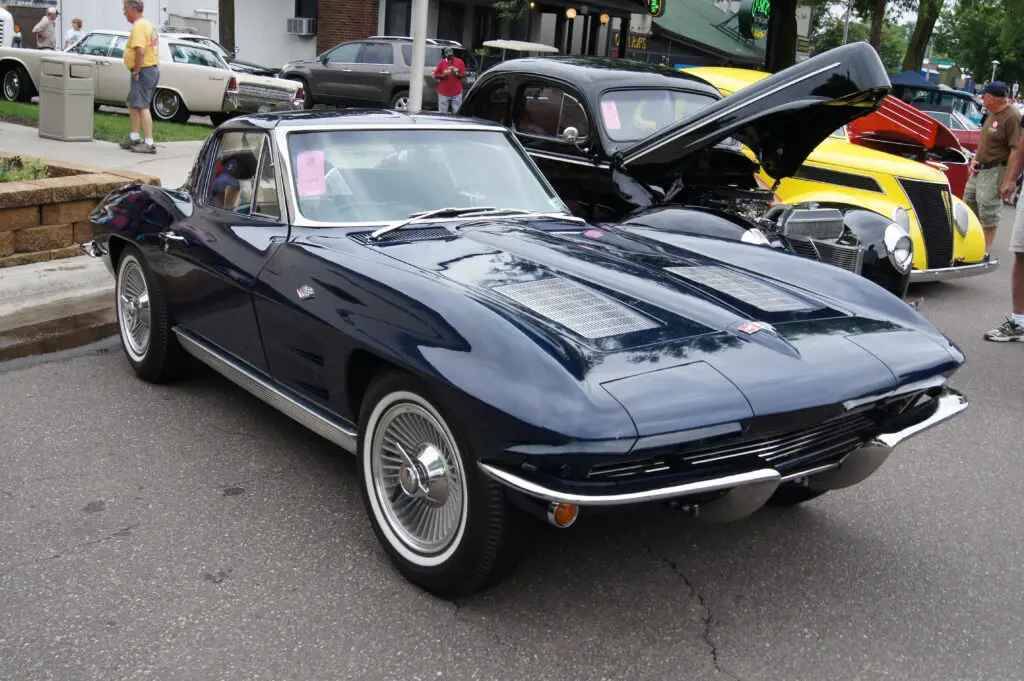
Believe it or not, seat belts weren’t always standard equipment, and many cars from the ’50s and earlier didn’t have them at all. Back then, people believed that being thrown clear of a crash was safer than being strapped in. It wasn’t until the ’60s that seat belts started becoming common, and even then, many drivers resisted using them. Today, wearing a seatbelt is second nature, and most cars even have alarms that won’t stop beeping until you buckle up. The idea of getting into a car without seat belts at all would probably terrify modern drivers.
It’s wild to think about now, but there was a time when seat belts were seen as optional accessories rather than life-saving devices. Some older cars had lap belts only, with no shoulder straps, offering minimal protection. Eventually, laws changed, and now we can’t imagine driving without them. But for those who grew up in the pre-seatbelt era, buckling up wasn’t always automatic. It’s just another way that driving has become much safer over time.
11. No Side Mirrors on the Passenger Side
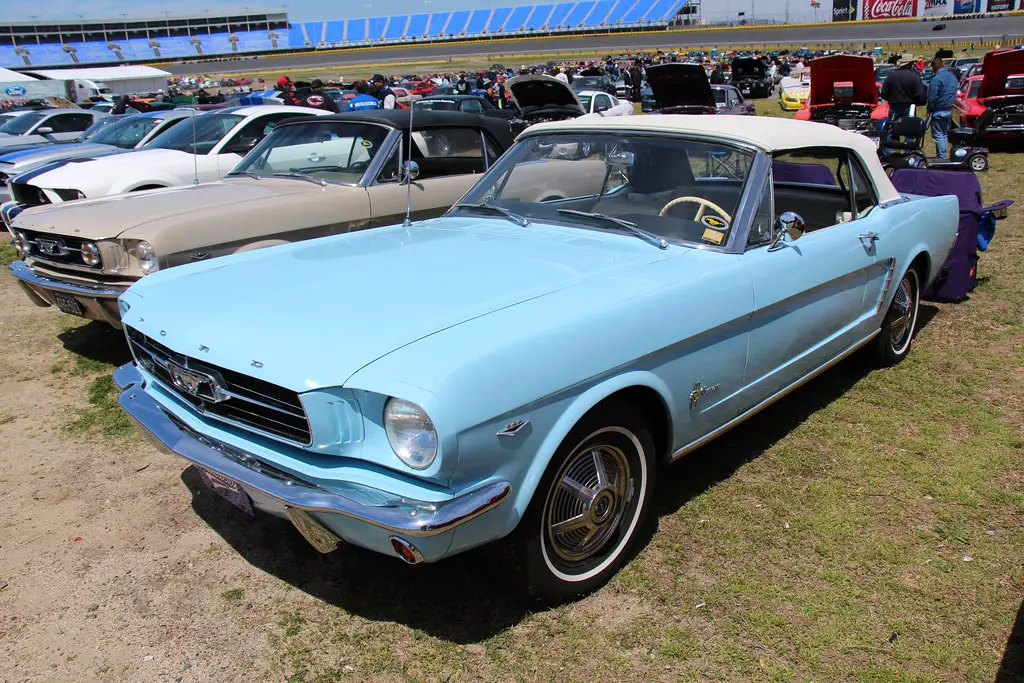
Believe it or not, older cars often came with just one side mirror—on the driver’s side. Passenger-side mirrors were either optional or completely absent, meaning drivers had to rely heavily on their rearview mirror and blind-spot checks. For younger drivers today, the idea of not having a right-side mirror would seem like a nightmare, especially in heavy traffic. Lane changes required a bit more guesswork, and merging onto highways could feel like a game of chance. If you wanted a second mirror, you usually had to pay extra for it, and some drivers just never bothered.
This feature disappeared as traffic conditions became more demanding and visibility standards improved. Today, not only do we have both side mirrors as standard, but we also have blind-spot monitors, backup cameras, and even 360-degree views. The idea of having only one tiny mirror to work with seems almost reckless in comparison. But back in the day, drivers just learned to compensate with frequent shoulder checks and careful maneuvering. It’s a reminder that driving used to require a lot more attention and skill than it does now.
12. Keys for Both the Door and the Ignition

Before key fobs and remote entry, many cars required two separate keys—one for the ignition and one for the doors. That meant you had to keep track of both, and if you lost one, you were in trouble. Younger drivers today, who are used to a single key or even push-button start, would probably find this system incredibly inconvenient. Locking and unlocking your car wasn’t as simple as pressing a button on your key fob. Instead, you had to manually insert the correct key, turn it, and hope the lock mechanism wasn’t frozen or jammed.
It wasn’t uncommon for people to mix up their keys or struggle with worn-down locks. Some even carried duplicate sets just in case one failed. Eventually, manufacturers streamlined the process, and now most cars have either a single key or completely keyless entry. The thought of juggling two separate keys just to access and start your car seems unnecessary today. But back in the day, it was just one of those little hassles that drivers accepted as normal.
13. AM-Only Radios
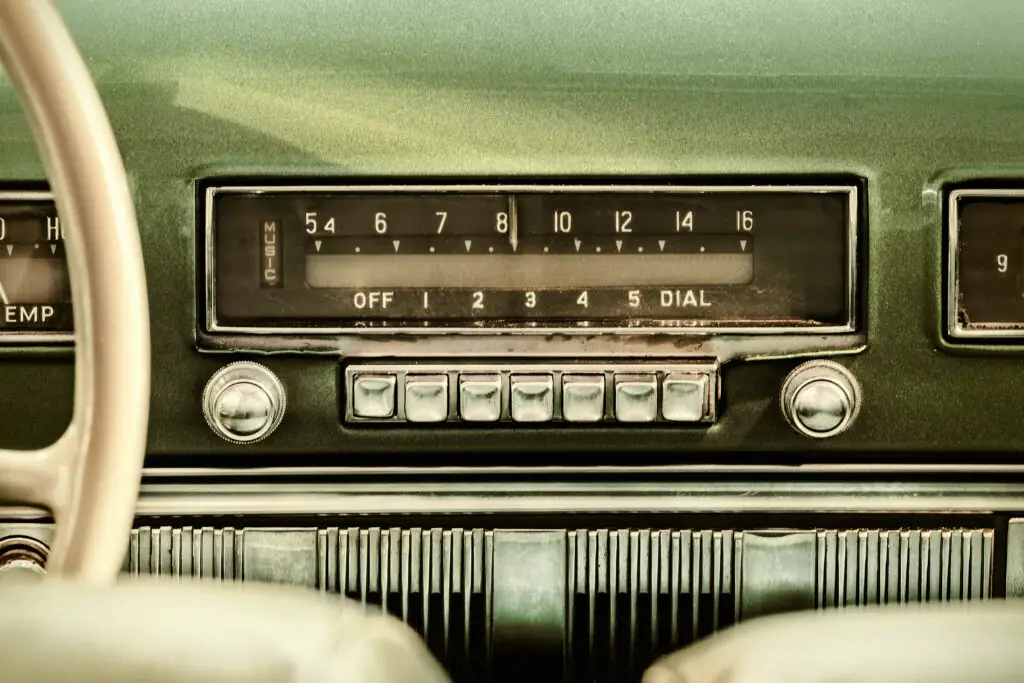
There was a time when car radios only picked up AM stations, meaning drivers were stuck with news, talk shows, and whatever music happened to be playing on those frequencies. Younger drivers, who have access to satellite radio, Bluetooth, and streaming services, would probably be baffled by the lack of entertainment options. If you wanted to hear your favorite song, you either had to wait for it to come on the radio or bring your own portable player. There were no auxiliary inputs, no CD changers, and certainly no touchscreen interfaces to scroll through playlists.
Eventually, FM radio became standard, bringing better sound quality and more variety, but even that seems outdated by today’s standards. Now, most cars come with full multimedia systems, complete with apps, navigation, and voice commands. The idea of being limited to whatever AM stations happened to be in range would drive younger generations crazy. But for boomers, that was just how road trips worked—you made do with whatever the radio gave you.
14. Ventilated Seats—Without A/C
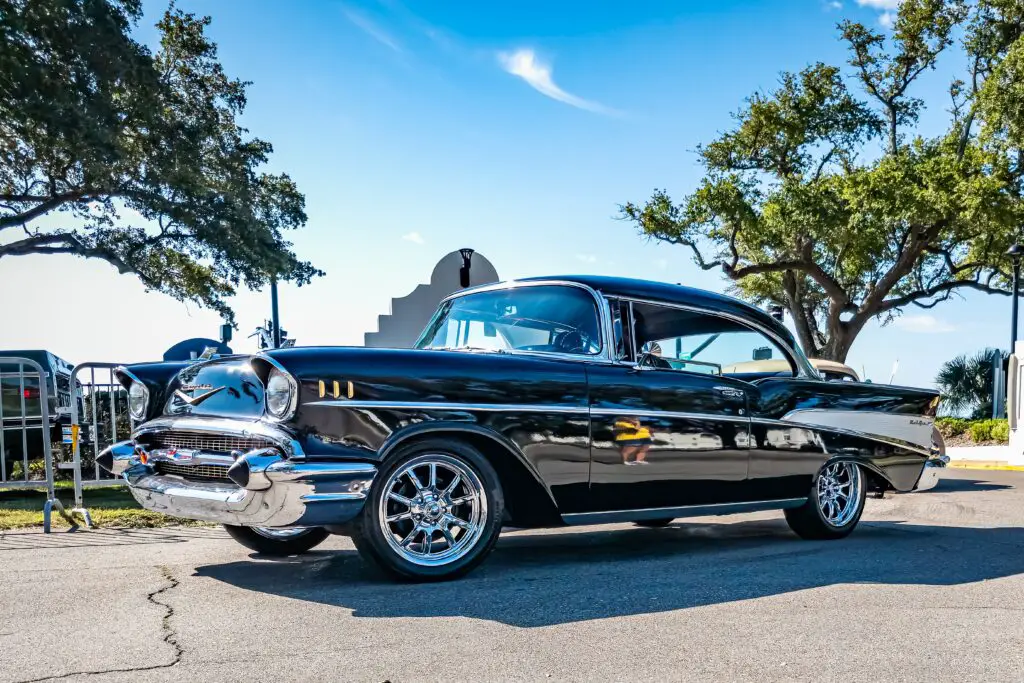
Before air conditioning was common, some cars had a different way of keeping drivers cool—ventilated seats that used built-in holes to allow air circulation. These weren’t high-tech cooling seats like we have today, but rather a basic system that let air flow through the upholstery to prevent sweating. Some cars even had small fans underneath the seats to push air up, creating a makeshift cooling effect. Younger drivers might be confused by the idea of ventilated seats that don’t actually blow cold air.
It was a clever workaround for hot summer days, but once A/C became standard, these features disappeared. Today’s ventilated seats are far more advanced, using actual cooling technology to keep drivers comfortable. But the original idea was surprisingly effective, even if it didn’t offer the instant chill of modern systems. For boomers, it was just another way cars were built to handle the elements without relying on high-tech solutions.
15. No Fuel Door Release Lever
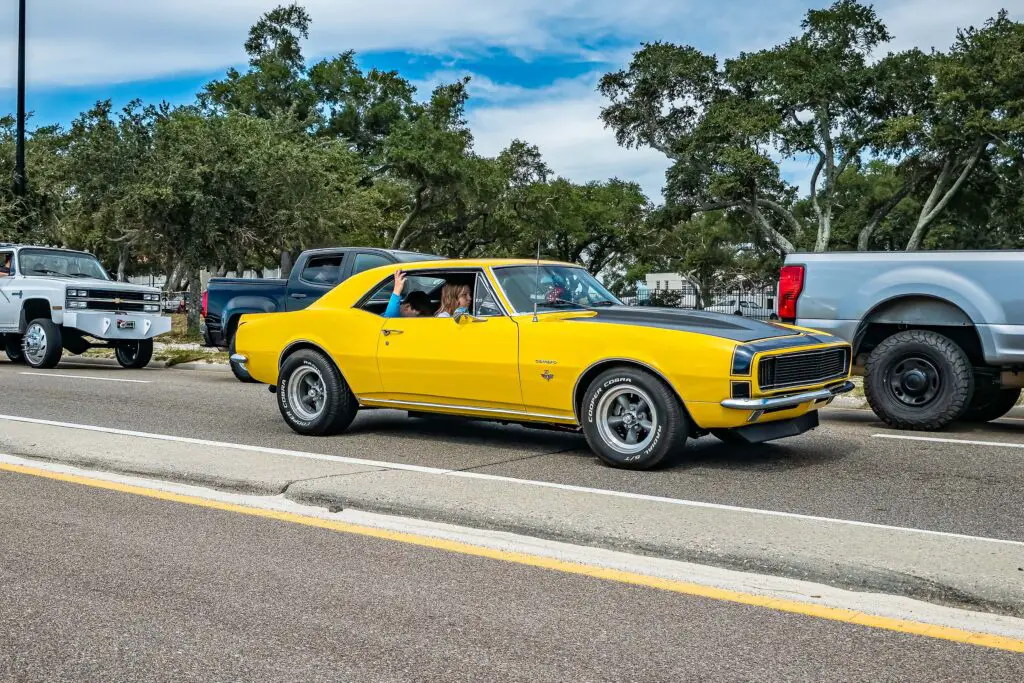
In older cars, opening the fuel door wasn’t as simple as pulling a lever inside the cabin. Instead, you had to get out and manually push or twist a latch to access the gas cap. Some cars even hid the fuel cap behind the license plate, requiring drivers to bend down and flip the plate up just to refuel. Younger drivers, used to pressing a button or flipping a switch, might be puzzled by the idea of physically searching for the fuel cap release.
It wasn’t the most convenient system, especially in bad weather or when wearing gloves. Eventually, automakers introduced interior release levers, and later, even capless fuel systems. But back then, if you weren’t familiar with a particular car’s setup, you could waste a good minute just trying to figure out how to open the gas tank. It’s a small but noticeable difference that shows how even the simplest tasks have been made easier in modern cars.
